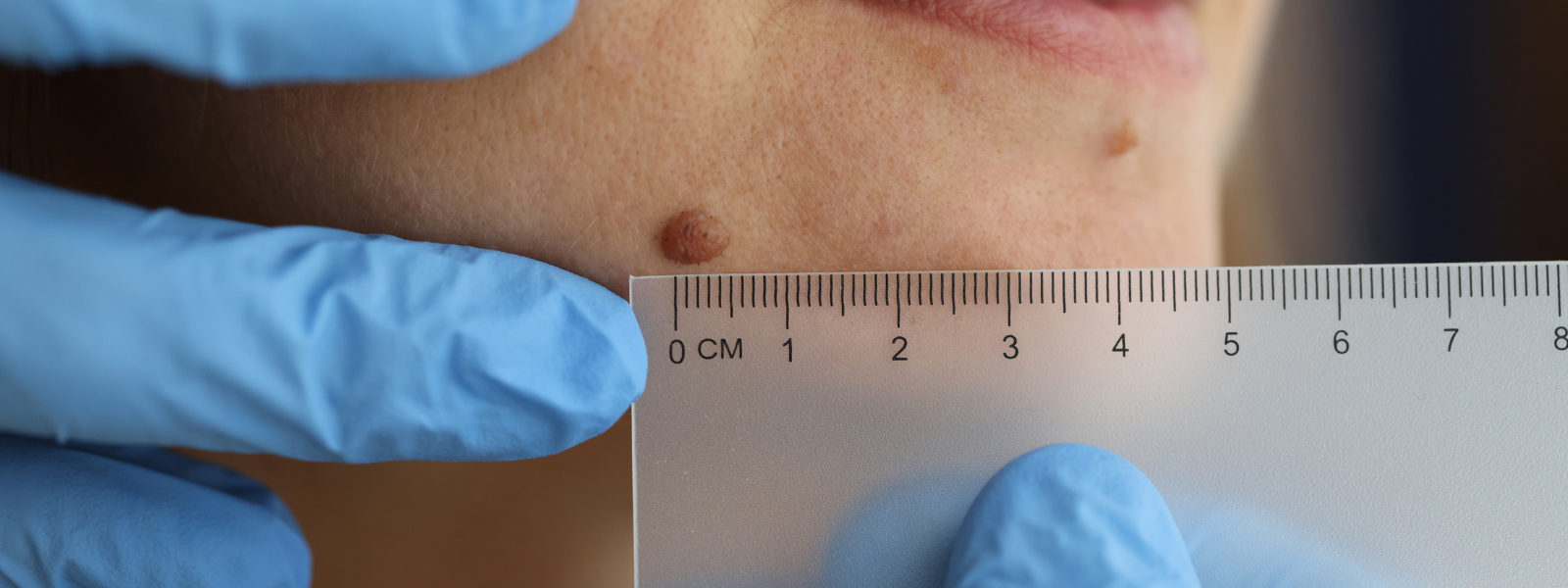Basal Cell Carcinoma

Overview
Basal Cell Carcinoma
Basal cell carcinoma (BCC) is the most common form of skin cancer, with more than 3 million new cases diagnosed every year in the U.S. BCC begins in the basal cells, the bottom layer of the epidermis. Basal cell carcinoma can take years to develop, so it’s seen frequently in older adults, but it is becoming common in people in their 30s. People at the highest risk of developing BCC usually have a lot of exposure to U.V. radiation from the sun or tanning beds, dramatically increasing their risk.
While anyone can develop a BCC, those at the high risk have fair skin, fair hair and light-colored eyes because they have less pigment in their skin to protect them from harmful U.V. rays. Those who freckle and burn easily are also at a higher risk for the same reason. Those who live at higher elevations or closer to the equator are also at a higher risk because of more U.V. radiation exposure.
Risk Factors for Basal Cell Carcinoma:
- Had radiation therapy
- A family history of skin cancer
- Had high exposure to arsenic
- A weakened immune system or who are taking immune-suppressing drugs
Basal cell carcinoma occurs most often on areas of the skin exposed to the sun, such as your face, neck, arms, legs and the backs of your hands.
If left untreated, BCC can be locally aggressive, invading into the surrounding tissue. Although extremely rare, a BCC can spread (metastasize) beyond the skin to other body areas. Once you have had a BCC, you are at an increased risk of developing additional BCCs in your lifetime and will require regular skin checks.
Symptoms
Symptoms of Basal Cell Carcinoma
Basal cell carcinoma appears as an abnormal growth (lesion) on your skin. It may look like a bump, be discolored or difficult to heal. Some indications that you may have basal cell carcinoma include:
Diagnosis
Basal Cell Carcinoma Diagnosis
Diagnosis begins with an examination where your doctor will ask questions about your and your family’s medical history and examine your skin for any signs of basal cell carcinoma. If your doctor suspects BCC, they will biopsy the suspicious area to verify if it is cancer.
In most cases, the doctor will sample the growth by doing a shave biopsy. Your doctor will send the sample to a lab for examination.
Treatments
Basal Cell Carcinoma Treatments
Treatment for basal cell carcinoma (BCC) depends on its size, stage, location, the patient’s overall health and if this is the first time you have had a BCC or a recurring BCC.
Small Basal Cell Carcinomas
Small carcinomas are usually early-stage and easily treated with surgery done in the clinic. Treatment options include:
Curettage & Electrodessication (C & E)
C & E involves scraping away the surface of the carcinoma with a curet (a small spoon-shaped device). After scraping away the lesion, your doctor will burn the base of the lesion with electricity.
Creams and Ointments
Creams and ointments may be applied topically to the lesion only in specific superficial cases.
Mohs Surgery
Mohs surgery removes the BCC layer by layer so the surgeon can examine each layer until all abnormal cells are removed. Mohs surgery is appropriate if BCC is recurring, is in sensitive areas such as the face or on larger growths to minimize the removal of healthy tissue while still getting the entire carcinoma.
Surgical Excision
Surgical excision can remove (excise) cancer from the affected area and part of the healthy tissue.
Radiation Therapy
Radiation therapy uses high-energy beams, such as x-rays, to remove the lymph nodes or other parts of the body where surgery isn’t feasible or in cases where surgery cannot remove the entire growth.
Metastasized Basal Cell Carcinomas
If the carcinoma has spread to lymph nodes or other parts of the body, then your doctor may consider two additional options:
Chemotherapy
Chemotherapy is delivered orally, intravenously or both and uses a mix of chemicals to target any quickly dividing cells.
Targeted Therapy
Targeted therapy works differently from chemotherapy by targeting weaknesses in basal cell carcinomas.
Specialists

